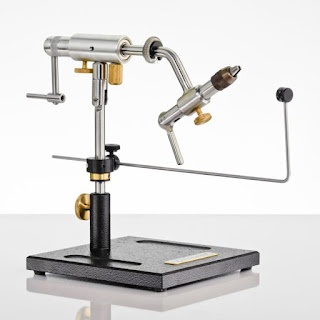Fly Vise
When you undertake tying your personal flies, the most essential tool you will need is actually a fly vise. You'll find many, many choices in fly vises and you could be confused as to which one you will wish to buy. Here are a couple of things to consider:
A pedestal base is handy if you are working around the kitchen table or traveling. It supports the vise with a heavy base that sets on the table like a lamp would, and it’s easy to move. Most vises may be bought with either a pedestal base or perhaps a clamp. Some vises come with both assistance systems. Try to get a appear at both before you buy a vise.
- The vise should hold a variety of hook sizes and shapes securely. It shouldn’t hold just several either, it should accommodate ALL hooks. If it doesn’t, do not buy it.
- The jaws on the vise must be positioned or be able to be positioned at an angle that enables you to tie flies of different sizes with it. Some vises have jaws that are as well big to use using a variety of hooks. Other individuals do not possess the jaws positioned at an angle that makes it possible for the tier to work with small hooks.
- Look for a vise that has jaws positioned at an angle that enables you to work around and with the smallest hooks you may possibly someday use. That may be size 28, so check to view when the vise will hold this size hook securely whilst allowing complete access to the principal length of the hook shank.
- Many vises have heads that pivot or rotate. They are nice features you should contemplate when buying for a fly vise. Despite the fact that a rotary feature isn’t a necessity, it really is a hassle-free feature you should take into account.
- Many specialist tiers use vises with heads which might be fixed and don’t pivot or rotate. You’ll have to decide if they are crucial features you’re prepared to invest in. Keep in thoughts, a great deal of extra features will not make a vise hold a hook any greater.
- A good vise should be easy to adjust to fit a variety of hooks. Despite the fact that many vises will adjust to hold a variety of hook sizes, some are simpler to adjust than other folks. Significantly less adjustment results in saved time and time is money to a commercial tier should you choose to go that route.
- Avoid any vise that takes plenty of time or manipulation to adjust to a specific hook. One or two twists of a knob should be the maximum adjustment needed to set any vise to a specific hook. After adjustment, a good vise should clamp down on a hook with a easy twist of a knob, squeeze of a lever or push of a cam. If it is harder than this, let a person much less informed monkey with the vise although you tie flies on your new, easy functioning vise.
- The size of the head and jaws of a vise will have an impact on how easy it's to use with specific size hooks. One specific vise on the market features a fast rotary feature that looks nice, but the jaws on the vise are so massive it isn’t feasible to use with small hooks. Small jaws are less complicated to work with.
- Another point you need to contemplate is how the vise is supported. A clamp is nice if you have a permanent tying bench or you want a vise that just will not move while you’re placing pressure on a hook.
A pedestal base is handy if you are working around the kitchen table or traveling. It supports the vise with a heavy base that sets on the table like a lamp would, and it’s easy to move. Most vises may be bought with either a pedestal base or perhaps a clamp. Some vises come with both assistance systems. Try to get a appear at both before you buy a vise.
